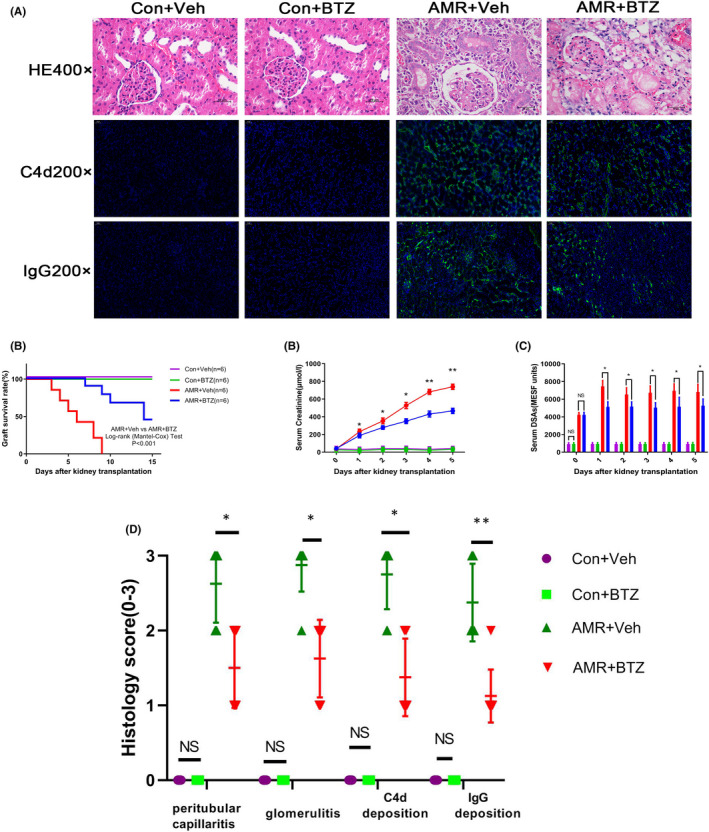FIGURE 2.

BTZ slowed down the pathological process of AMR, reduced serum level of DSAs and improved both renal function and graft survival in AMR rats. We harvested kidneys from the Con‐Veh group, the Con‐BTZ group, the AMR‐Veh group and the AMR‐BTZ group, on day 4 after transplantation. Kidneys were then stained with H&E and PAS. NS, no significance; * p < 0.05; ** p < 0.01; (A) The kidneys of the Con‐BTZ group showed similar pathological changes as the Con‐Veh group. Kidneys in the AMR‐Veh group developed serious PTC inflammation and glomerulitis following kidney transplantation. Compared with the AMR‐Veh group, the pathological process following kidney transplantation in the AMR‐BTZ group was significantly alleviated. There was no C4d and IgG staining on the PTCs in the Con‐Veh group and the Con‐BTZ group. However, there was intense and diffuse C4d and IgG staining on PTCs in the AMR‐Veh group; however, these effects were significantly alleviated in the AMR‐BTZ group. (B) The AMR‐BTZ group had a longer graft survival time compared with the AMR‐Veh group, with a mean survival time of 9.24 ± 4.01 vs 5.09 ± 2.26 days. The log‐rank (Mantel‐Cox) test revealed that BTZ significantly improve graft survival in a rat model of AMR. (C) Serum creatinine level in the AMR‐BTZ group was much higher than the Control group, although serum creatinine level was remarkably reduced by BTZ compared with the AMR‐Veh group (p < 0.05). (D) The serum level of DSAs was significantly reduced in AMR rats treated with BTZ when compared with rats with AMR but without BTZ treatment. (E) Histology scores of kidney according to Banff criteria
